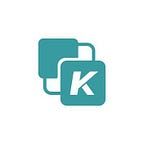KDAG Advantages
1. High efficiency, speed and throughput
Traditional blockchain technology is a chain database structure, each block is like a chain, which is the origin of the name BlockChain, while KDAG is a Dag-chain technology without the concept of packing and blocking.
The process of generating a new block goes through several stages of transaction generation, block construction, block competition, and block broadcast, which ensures security but is too cumbersome and inefficient. In order to solve the above challenges, a new idea is proposed: let each transaction directly participate in maintaining the transaction order of the whole network. After a transaction is initiated, it is directly broadcasted to the whole network, skipping the packing block stage and achieving the so-called Blockless. this saves the time of packing the transaction out of the block. Now KDAG does not need to pack the confirmation, but broadcasts the network confirmation directly after the transaction is initiated, which is a qualitative leap in efficiency in theory.
In addition, KDAG’s transactions can be written to the full ledger in real time and in parallel, thus ensuring the speed of transaction confirmation.
Secondly, in KDAG, individual transactions are brought to an ordered state by determining the master chain, thus effectively solving the problem of double-spending.
Again, with the traditional chain storage structure, when the volume of transactions keeps increasing, the network will be congested and the transactions cannot be confirmed for a long time. In KDAG, however, the more nodes participate, the more transactions there are, and the transactions are confirmed faster, because the transactions are confirmed by referencing each other.
2. Smart Contracts
The underlying layer uses the EVM mechanism. As one of the most core functions of Ethereum, smart contracts and its language Solidity have been widely used in recent years. The Ethereum virtual machine EVM and smart contracts meet the functional requirements of Turing completeness, and the security review of smart contracts is becoming more and more popular and standardized.
KDAG solves the problem that ordinary DAG ledgers cannot run smart contracts in an orderly manner through its unique consensus sorting mechanism. KDAG sorts the unordered contract transactions by consensus and uploads them to the chain, so that the VMs on each node in the network have the same running result and contract status.
3. Other advantages of KDAG
Low cost
Compared to the POW consensus algorithm, KDAG is inexpensive. Individuals and institutions can run KDAG nodes without the need to purchase expensive custom mining equipment. They can run on low-cost hardware devices that are already available.
High security
Each participant in a transaction is a verifier of the preceding transaction and is continuously verified in a convergent manner, making it very difficult and expensive to create double-spend transactions. Moreover, the technical principle of hash map is natural to the double spend, transaction certainty problem encountered in traditional blockchain.
Asynchronous Byzantine Fault Tolerance
KDAG is asynchronous Byzantine fault-tolerant. This technical term says that no individual member (or small group of members) can prevent the community from reaching a consensus. Nor can they change it after consensus has been reached. Each member can even know when they have reached a consensus level.
ACID Compliance
ACID (Atomicity, Consistency, Isolation, Durability) is a database term that KDAG conforms to when it is used as a distributed database. This property allows a community of nodes to reach consensus on transactions in the order in which they occur.
Fair and Trustworthy
There is no dedicated node responsible for network state consensus, and any participant in the network is both a user and a maintainer of the network, with equal status.
